Introduction to Dog Socialization
Dog socialization is a critical aspect of raising a healthy and well-adjusted dog. It involves exposing your dog to a variety of people, environments, animals, and experiences in a positive and controlled manner. The goal is to help your dog become comfortable and confident in different situations, reducing the likelihood of fear, aggression, or anxiety.
Socialization is most effective when started at a young age, typically when a puppy is between 3 to 16 weeks old. However, it’s a lifelong process that continues as your dog encounters new experiences throughout their life.
Proper socialization can lead to numerous benefits, including improved behavior, increased adaptability, and a stronger bond between you and your dog. It’s an essential part of responsible pet ownership and contributes significantly to your dog’s overall quality of life. Stay tuned for more detailed information in the following sections of this article. 🐶📘
Definition of dog socialization
Dog socialization is the process of exposing dogs to new environments, experiences, individuals, and other animals in a way that helps them feel safe and comfortable. This process helps dogs learn how to behave appropriately in various situations and reduces the likelihood of fear, anxiety, or aggression. It’s an essential part of raising a well-adjusted, confident, and happy dog. 🐶
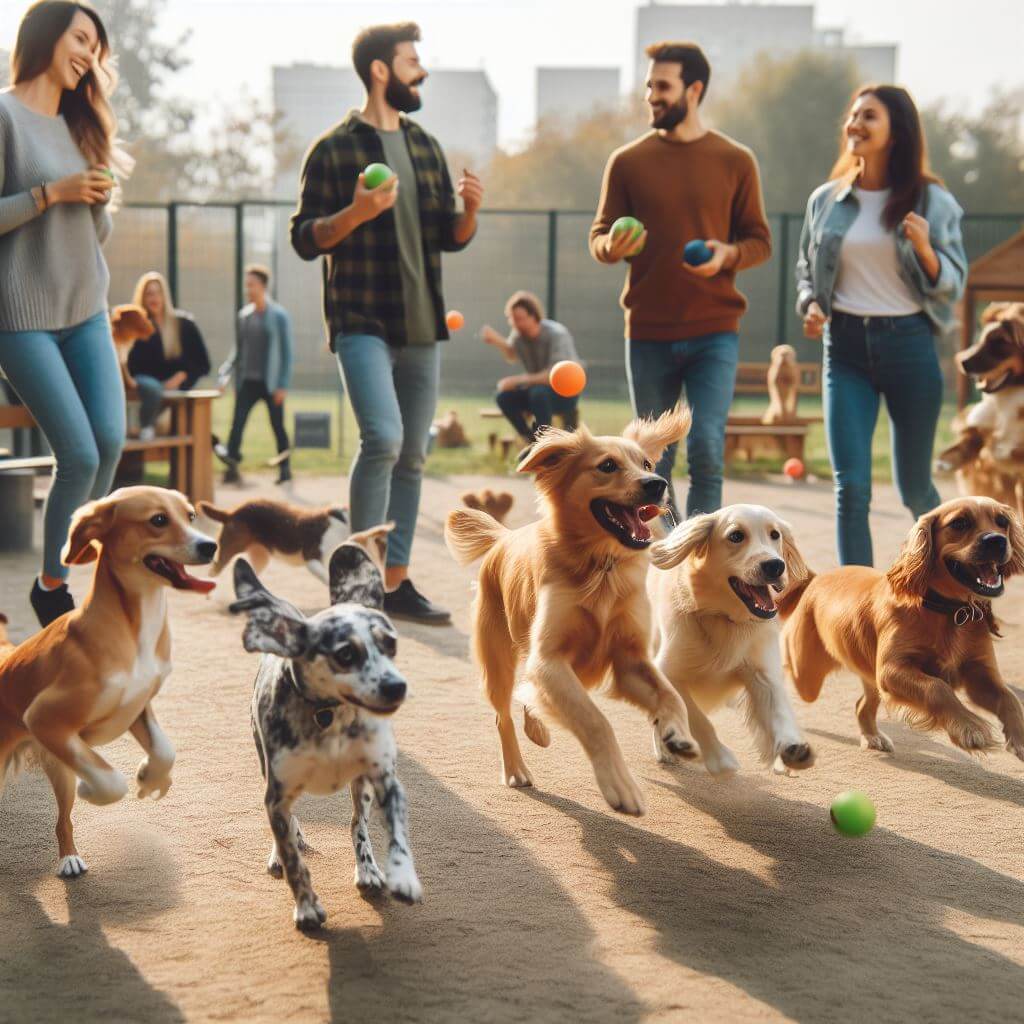
Why it’s important
Socializing your dog is crucial for a number of reasons:
- Behavioral Development: Socialization helps puppies learn how to interact appropriately with other dogs and people. This can prevent behavioral problems such as aggression, fear, and anxiety.
- Adaptability: A well-socialized dog is more likely to be comfortable in a variety of settings, from busy city streets to quiet country parks. They’re also better equipped to handle changes in their environment, such as moving to a new home or welcoming a new family member.
- Safety: Dogs that are comfortable around people and other animals are less likely to react aggressively or fearfully, making them safer to be around.
- Quality of Life: Dogs that are well-socialized have more opportunities for fun and exercise. They can go to dog parks, enjoy walks in busy areas, and generally participate more fully in family life.
- Stronger Bond with Owner: Socialization can strengthen the bond between you and your dog. As your dog learns to trust and respond to you in different situations, your relationship can grow stronger.
Remember, socialization is not a one-time event but a lifelong process. The more positive experiences your dog has, the more confident and happy they’ll be! 🐶
The Importance of Socializing Your Dog
The Socializing your dog is a crucial part of their development and well-being.
Here are some reasons why it’s so important:
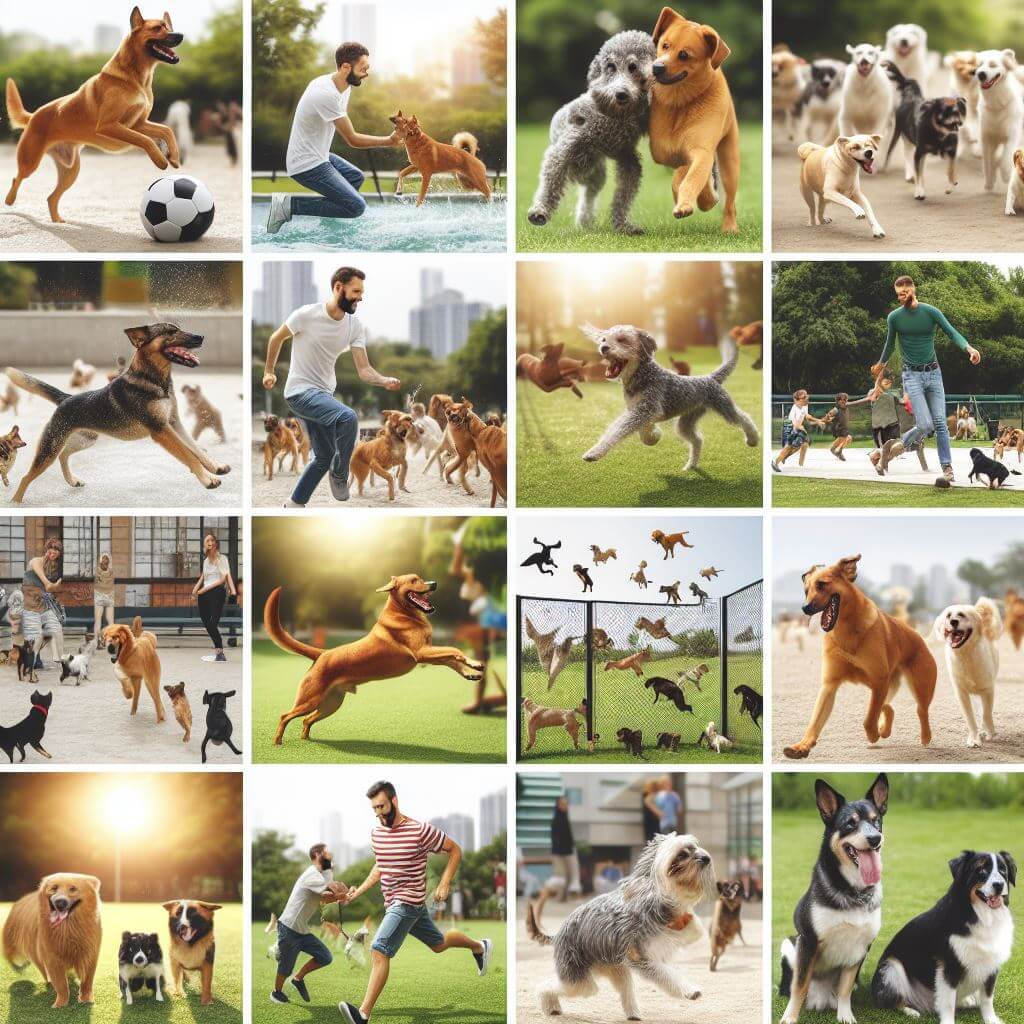
- Behavioral Benefits: Proper socialization can help prevent behavioral problems such as aggression and anxiety. By exposing your dog to a variety of people, animals, and environments, they learn how to behave appropriately in different situations.
- Safety: A well-socialized dog is less likely to react with fear or aggression, making them safer to be around. This is particularly important if you have children or other pets in the house.
- Health Benefits: Socialization can also have physical health benefits. Dogs that are well-socialized tend to get more exercise and mental stimulation, which can contribute to overall physical health.
- Quality of Life: Socialized dogs are generally happier and more content. They’re able to enjoy a wider range of activities and experiences, from walks in the park to playdates with other dogs.
- Stronger Bond with Their Human: Socialization can also strengthen the bond between you and your dog. As your dog learns to trust and respond to you in different situations, your relationship can grow stronger.
Remember, socialization is not a one-time event but a lifelong process. The more positive experiences your dog has, the more confident and happy they’ll be! 🐶
Benefits for the dog
Socializing your dog has numerous benefits for the dog itself:
- Reduced Fear and Anxiety: Dogs that are well-socialized from a young age are less likely to develop fear and anxiety in different situations. They are more comfortable with various experiences, whether it’s meeting new people, encountering other animals, or exploring new environments.
- Improved Behavior: Socialization helps dogs learn how to behave appropriately in different situations. They learn what behaviors are acceptable and which ones are not, leading to better overall behavior.
- Increased Confidence: Socialized dogs are generally more confident and less likely to exhibit fear-based behaviors. They are comfortable in their surroundings and can handle new experiences with ease.
- Better Physical Health: Regular socialization often involves physical activity, which can contribute to better overall health for your dog. It can help keep their weight in check and promote cardiovascular health.
- Happier Life: Ultimately, a well-socialized dog is a happy dog. They can enjoy a variety of experiences, interact positively with people and other animals, and live a fulfilling life. 🐶
Benefits for the owner and society
Socializing your dog also has numerous benefits for the owner and society:
- Easier Management: Well-socialized dogs are generally easier to manage. They’re less likely to react aggressively or fearfully in new situations, which makes them easier to handle in public places.
- Stronger Bond: Socialization can help strengthen the bond between you and your dog. As your dog learns to trust and respond to you in different situations, your relationship can grow stronger.
- Peace of Mind: Knowing that your dog can handle a variety of situations without becoming fearful or aggressive can give you peace of mind when bringing your dog into new environments.
- Positive Impact on Society: Well-socialized dogs are less likely to cause problems in the community. They’re less likely to be involved in incidents of aggression towards people or other animals.
- Promotes Responsible Pet Ownership: Taking the time to properly socialize your dog demonstrates responsible pet ownership. It shows a commitment to raising a dog that is a well-behaved member of the community.
Remember, a well-socialized dog is not only a happier dog, but also creates a more harmonious environment for everyone. 🐶👨👩👧👦
When to Start Socializing Your Dog
The process of socializing your dog should ideally begin when they are a puppy. The most critical socialization period for a dog is between 3 to 16 weeks of age. This is the time when puppies are most receptive to new experiences, and positive interactions can have a lasting impact on their behavior.
However, it’s important to note that socialization is a lifelong process. While the early weeks are crucial, continued exposure to a variety of people, animals, and environments throughout a dog’s life will help them remain well-adjusted and confident.
Remember, it’s never too late to start socializing your dog. Even older dogs can learn to become more comfortable in new situations with patience and positive reinforcement. 🐶
Ideal age to start
The ideal age to start socializing your dog is when they are a puppy, specifically between 3 to 16 weeks of age. This period is often referred to as the ‘critical socialization window’ for puppies. During this time, puppies are most receptive to new experiences, and positive interactions can have a lasting impact on their behavior. However, it’s important to remember that socialization should continue throughout a dog’s life to help them remain well-adjusted and confident. 🐶
The role of critical periods in puppy development
Critical periods in puppy development are specific windows of time during which puppies are most receptive to learning and socializing. These periods play a crucial role in shaping a puppy’s behavior and responses to their environment. Here are some key stages:
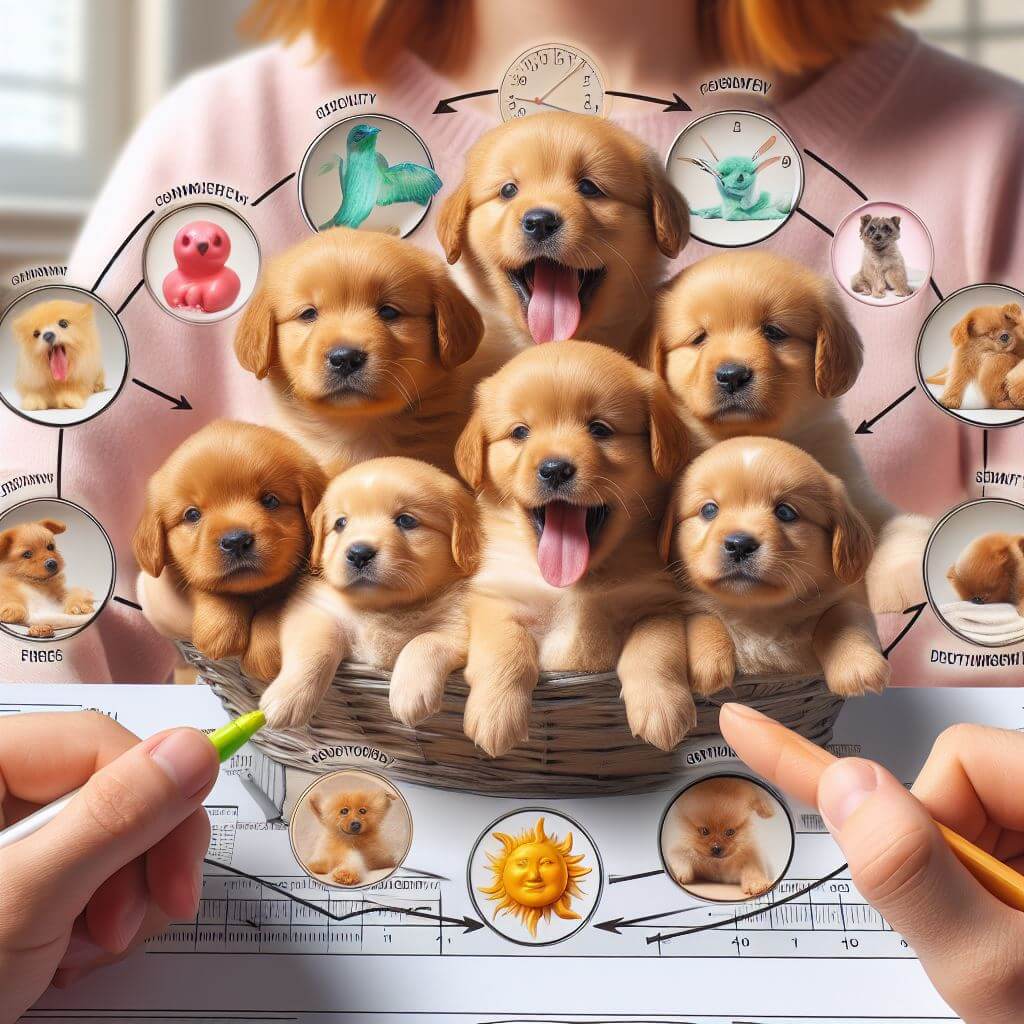
- Neonatal Period (0-12 Days): During this time, the puppy responds only to warmth, touch, and smell. They cannot regulate body functions such as temperature and elimination.
- Transition Period (13 – 20 Days): The puppy’s eyes and ears open, but sight and hearing are limited. Tail wagging begins, and the puppy starts to control body functions.
- Socialization Period (3 to 16 weeks): This is the most critical period for socialization. Puppies are highly receptive to new experiences, and positive interactions can have a lasting impact on their behavior.
- Fear Period (8 to 12 weeks): During this time, puppies may become fearful and wary of new experiences. However, they’re also at their most impressionable, and positive experiences will help them adjust to their new environment.
Understanding these critical periods can help owners provide appropriate experiences and training to ensure their puppies grow into well-adjusted, confident adult dogs. It’s important to remember that while these periods are critical, socialization should continue throughout a dog’s life.
How to Socialize a Puppy
Socializing a puppy involves gradually introducing them to a variety of experiences, environments, and beings in a positive and safe manner.
Here’s a step-by-step guide on how to do it:
- Start Early: Begin socializing your puppy as soon as you bring them home, ideally between 3 to 16 weeks of age.
- Introduce New Experiences Gradually: Don’t overwhelm your puppy with too many new experiences at once. Start with calm, controlled situations and gradually work up to more challenging ones.
- Meet Different People: Let your puppy meet people of all ages and appearances. This includes children, adults, and the elderly, people wearing hats or glasses, etc.
- Encounter Other Animals: If it’s safe, let your puppy interact with other vaccinated dogs and pets. Dog parks or puppy classes can be great for this.
- Explore Various Environments: Take your puppy to different places – indoor, outdoor, noisy, quiet, crowded, and empty places. Let them experience various sounds, smells, and surfaces.
- Positive Reinforcement: Always associate new experiences with positive things like treats, toys, and praises. This will help your puppy perceive new experiences as positive.
- Patience and Consistency: Be patient and consistent in your socialization efforts. It’s a gradual process and every puppy learns at their own pace.
- Professional Training Classes: Consider enrolling your puppy in a training class. These classes can provide controlled and safe environments for socialization.
Remember, every puppy is unique and what works for one might not work for another. Always pay attention to your puppy’s comfort level and never force them into a situation where they feel scared or overwhelmed. Happy socializing! 🐶
Step-by-Step Guide to Socialize a Puppy
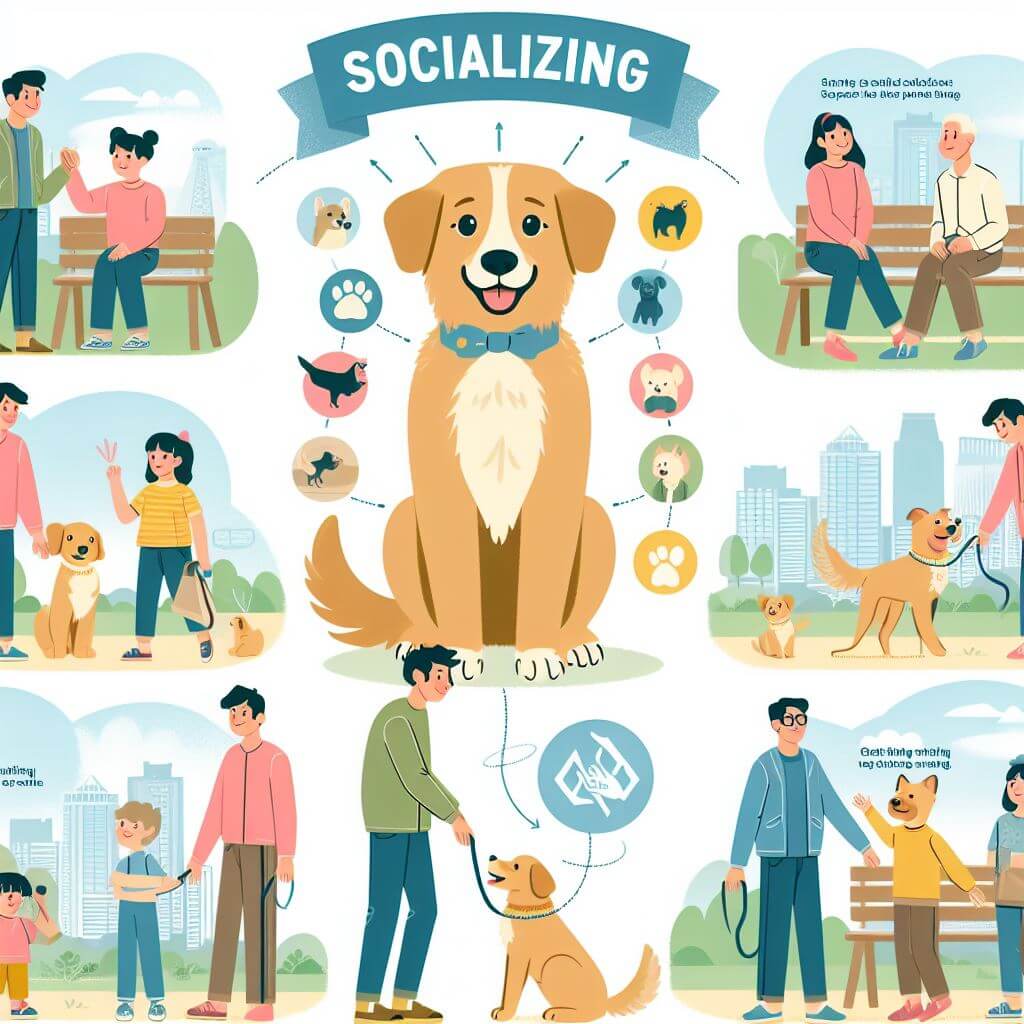
Step-by-Step Guide to Socialize a Puppy
- Start Early: Begin socializing your puppy as soon as you bring them home. The critical socialization window for puppies is between 3 to 16 weeks of age.
- Introduce New Experiences Gradually: Start with calm, controlled situations and gradually introduce more complex scenarios. Avoid overwhelming your puppy with too many new experiences at once.
- Meet Different People: Let your puppy meet people of all ages, sizes, and appearances. This includes children, adults, people wearing different types of clothing, etc.
- Encounter Other Animals: Allow your puppy to interact with other vaccinated dogs and pets. This could be at a dog park, a friend’s house, or during a puppy class.
- Explore Various Environments: Take your puppy to different places such as parks, pet-friendly stores, and busy streets. Let them experience various sounds, smells, and surfaces under their paws.
- Positive Reinforcement: Always associate new experiences with positive things like treats, toys, and praises. This helps your puppy perceive new experiences as positive.
- Patience and Consistency: Be patient and consistent in your socialization efforts. Remember, it’s a gradual process and every puppy learns at their own pace.
- Professional Training Classes: Consider enrolling your puppy in a training class. These classes can provide a controlled and safe environment for socialization.
Remember, the goal of socialization is to help your puppy become comfortable in various situations and reduce the likelihood of fear or aggression. Happy socializing! 🐶
Do’s and Don’ts of Socializing a Puppy
Do’s:
- Do Start Early: Begin socialization as soon as your vet gives the green light. The critical socialization window is between 3 to 16 weeks of age.
- Do Use Positive Reinforcement: Always associate new experiences with positive things like treats, toys, and praises.
- Do Introduce New Experiences Gradually: Start with calm, controlled situations and gradually introduce more complex scenarios.
- Do Be Patient and Consistent: Remember, socialization is a gradual process and every puppy learns at their own pace.
- Do Seek Professional Help if Needed: If your puppy seems overly fearful or aggressive, don’t hesitate to seek help from a professional dog trainer or behaviorist.
Don’ts:
- Don’t Force Your Puppy: Never force your puppy into a situation where they feel scared or overwhelmed.
- Don’t Rush the Process: Trying to expose your puppy to too many things at once can be counterproductive. Take it slow and steady.
- Don’t Neglect Socialization After Puppyhood: While the early weeks are crucial, continued socialization throughout a dog’s life is important.
- Don’t Ignore Your Puppy’s Body Language: If your puppy seems uncomfortable, remove them from the situation and try again another time.
- Don’t Punish Fearful Behavior: Punishing your puppy for showing fear can make their fear worse. Instead, use positive reinforcement to help them overcome their fears.
Remember, every puppy is unique, so what works for one might not work for another. Always pay attention to your puppy’s comfort level and adjust your approach as needed. Happy socializing! 🐶
Socializing Adult Dogs: Is It Too Late?
While it’s true that the early weeks of a dog’s life are a critical period for socialization, it’s never too late to start. Adult dogs can still learn to be comfortable in new situations and with new people and animals. Here are some key points to remember:
- Patience is Key: Socializing an adult dog may take more time and patience than socializing a puppy. It’s important to go at your dog’s pace and not rush the process.
- Positive Reinforcement: Just like with puppies, positive reinforcement is crucial. Always associate new experiences with positive things like treats, toys, and praises.
- Professional Help: If your adult dog shows signs of fear or aggression, it may be helpful to seek the assistance of a professional dog trainer or behaviorist.
- Consistency: Consistent exposure to new experiences is important. Regularly introduce your dog to new environments, people, and animals.
- Health Check: If your adult dog suddenly becomes fearful or aggressive, it’s worth having a vet check them over to rule out any health issues that could be causing a change in behavior.
Remember, every dog is unique, and what works for one might not work for another. Always pay attention to your dog’s comfort level and adjust your approach as needed. Happy socializing! 🐶
Challenges and how to overcome them
Socializing an adult dog can be more challenging than socializing a puppy because you aren’t starting with a blank slate. Older dogs are more hesitant to accept new experiences. However, with patience and the right approach, it is possible to help an adult dog become more socialized. Here are some common challenges and ways to overcome them:
- Fearful or Anxious Behavior: Dogs who missed early socialization often exhibit fearful, anxious, over-excited, or aggressive behavior. They might be reactive towards other dogs, or fearful around unfamiliar people. To overcome this, start small and work on confidence-building exercises. Introduce potential triggers and then reward calm behavior with a mix of treats and praise.
- Handling Issues: Some dogs who missed early socialization don’t do well with handling, such as at the groomer or veterinarian’s office. Gradual exposure and positive reinforcement can help your dog become more comfortable with being handled.
- Unfamiliar Environments: Your dog may be anxious anywhere outside of their comfort zone at home. Start by introducing your dog to new environments slowly. For example, if your dog is comfortable in your backyard, but freezes and gets tense anytime you take them in the front yard, stick with the backyard at first and work on confidence-building exercises.
- Noise Anxiety: Dogs who missed early socialization might have noise anxiety during fireworks or other loud noises. Desensitization and counterconditioning protocols can be helpful in these cases.
Remember, socializing an adult dog requires patience and consistency. It’s important to move at a pace that’s comfortable for your dog and to always end on a positive note.
Success stories
It’s never too late to socialize an adult dog. Even if your dog has missed out on early socialization, you can still do quite a lot to help them feel more comfortable and confident. Here are some success stories that might inspire you:
- Jada, the Mastiff: Jada was a large (170 lbs!) and strong mastiff who was fearful of anyone other than her immediate family members. If anyone reached for her, she would snap, which was a scary experience for both humans and Jada. However, with patience and proper socialization techniques, Jada was able to overcome her fear.
- Rescues at Hounds Lounge: Many dogs at Hounds Lounge were adopted well after their puppy days and entered their new homes without proper socialization. Despite this, they are now shining examples of how to socialize an adult dog.
Remember, socializing an adult dog is more challenging than socializing a puppy because you aren’t starting with a blank slate. Older dogs are more hesitant to accept new experiences. However, with patience, practice, and lots of treats, you can help your adult dog become more socialized. It’s a rewarding journey that can significantly improve your dog’s quality of life.
Methods and Techniques for Dog Socialization
Socializing a dog involves introducing them to a variety of experiences, environments, and beings in a positive and controlled manner.
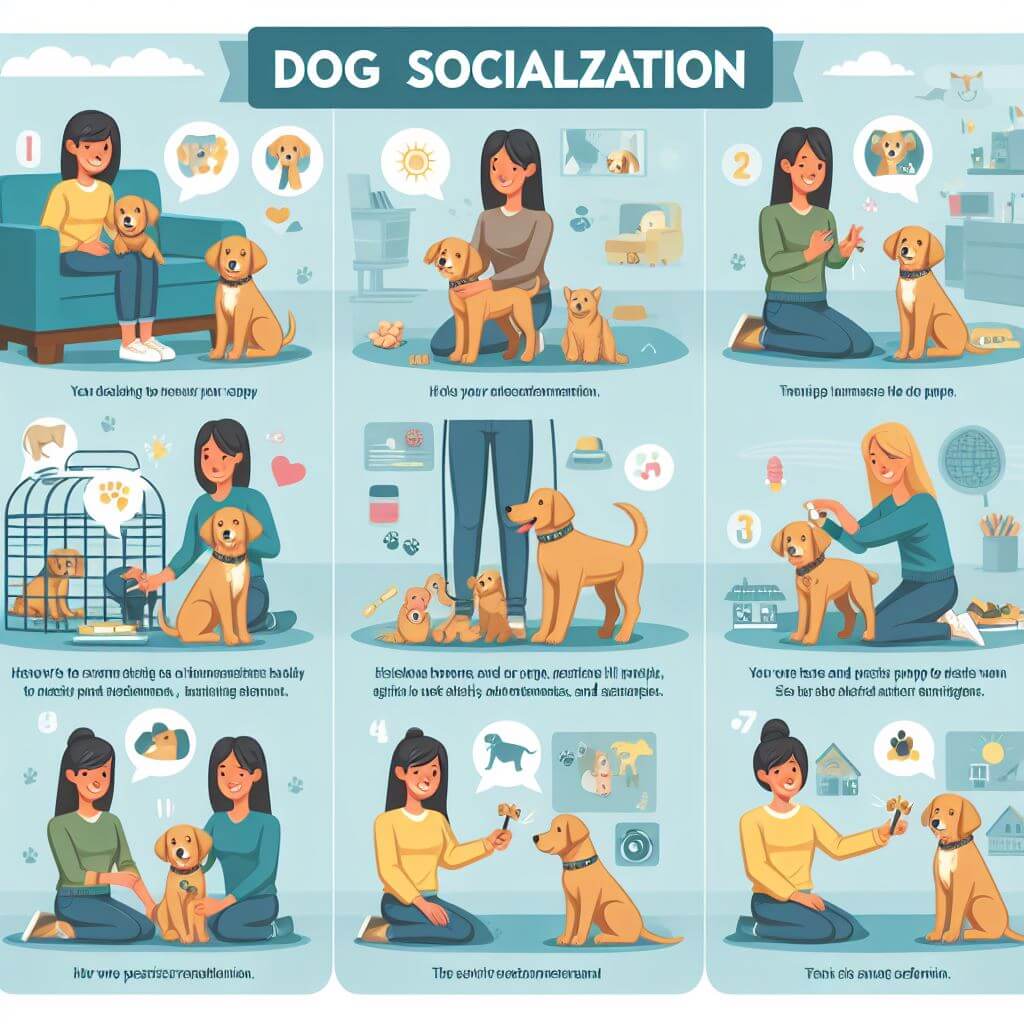
Here are some methods and techniques for dog socialization:
- Positive and Diverse Experiences: Provide regular positive and diverse experiences to encourage your dog to enjoy new experiences without becoming fearful or aggressive. Reward engagement with praise, play, and treats.
- Safe Withdrawal: Allow the dog to withdraw if he or she is uncomfortable. Move at a pace appropriate for your pet’s personality.
- Visible Petting: Ensure that people pet your dog where their hands can be seen, like on your dog’s chest or chin.
- Use of Treats: Use treats to give your dog a positive association with new people and experiences.
- Back to Basics: A dog who is confident with their training and routine makes for a well-rounded pooch.
- Daily Walks: Go for daily walks. This not only provides exercise but also exposes your dog to different environments and stimuli.
- Dog Park Visits: Walk around the dog park. This allows your dog to observe other dogs and their behavior.
- Introduce New People and Dogs: Introduce one new person or dog at a time. This prevents your dog from feeling overwhelmed.
- Watch Your Mindset: Your attitude can influence your dog’s behavior. Stay calm and positive to help your dog feel secure.
Remember, the goal of socialization is to help your dog feel comfortable and safe in various situations, not to overwhelm them. Always work at an intensity at which the dog is completely comfortable.
Different approaches (e.g., puppy classes, play dates, public outings)
Here are some common approaches and how to choose the right one for your dog:
- Puppy Classes: Puppy socialization classes provide a safe and controlled environment for your puppy to interact with other dogs and people. These classes often include basic obedience training as well.
- Play Dates: Setting up play dates with other dogs can be a great way to socialize your dog. Make sure the other dog is friendly and well-socialized to ensure a positive experience.
- Public Outings: Taking your dog to public places like parks, pet stores, and outdoor cafes can expose them to a variety of people, animals, and environments.
How to choose the right method for your dog
Consider Your Dog’s Personality: Some dogs are more outgoing and adventurous, while others may be shy or anxious. Choose a method that suits your dog’s personality.
Start Small: If your dog is not used to socializing, start with less intimidating situations like one-on-one play dates before moving on to more challenging environments like dog parks.
Go at Your Dog’s Pace: Always work at an intensity at which the dog is completely comfortable. If your dog seems overwhelmed, take a step back and try something less intense.
Use Positive Reinforcement: Always associate new experiences with positive things like treats and praise. This will help your dog form positive associations with socializing.
Consult a Professional: If you’re unsure about how to socialize your dog or if your dog has serious socialization issues, consider consulting a professional dog trainer or behaviorist.
Remember, every dog is unique, so what works for one dog might not work for another. The most important thing is to be patient and consistent, and to make socialization a positive experience for your dog.
Socializing Your Dog with Other Dogs
Socializing your dog with other dogs is very important. You want a dog to be able to interact peacefully with a variety of dogs.

Here are some methods and techniques for socializing your dog with other dogs:
Different Approaches:
- Doggy Play Dates: Planning a doggy play date with a friendly neighborhood canine is an excellent way of socializing a dog with other dogs. It helps dogs to develop social skills, builds confidence, and reduces anxiety around other dogs.
- Dog Classes: Ask your vet about local dog socializing opportunities that might be a good fit for you and your pet. Dog training classes are also a great place to meet other dogs and people in a safe and controlled environment.
- Public Outings: Taking your dog to public places like parks can expose them to a variety of dogs3.
Choosing the Right Method:
- Consider Your Dog’s Personality: Some dogs are more outgoing and adventurous, while others may be shy or anxious. Choose a method that suits your dog’s personality.
- Start Small: If your dog is not used to socializing, start with less intimidating situations like one-on-one play dates before moving on to more challenging environments like dog parks.
- Use Positive Reinforcement: Always associate new experiences with positive things like treats and praise. This will help your dog form positive associations with socializing.
- Consult a Professional: If you’re unsure about how to socialize your dog or if your dog has serious socialization issues, consider consulting a professional dog trainer or behaviorist.
Remember, every dog is unique, so what works for one dog might not work for another. The most important thing is to be patient and consistent, and to make socialization a positive experience for your dog.
Importance of dog-to-dog interactions
Dogs are social beings and their interactions, especially play, are deeply rooted in instinct and evolution. Socializing with other dogs improves their welfare in different ways than dog-human interactions.
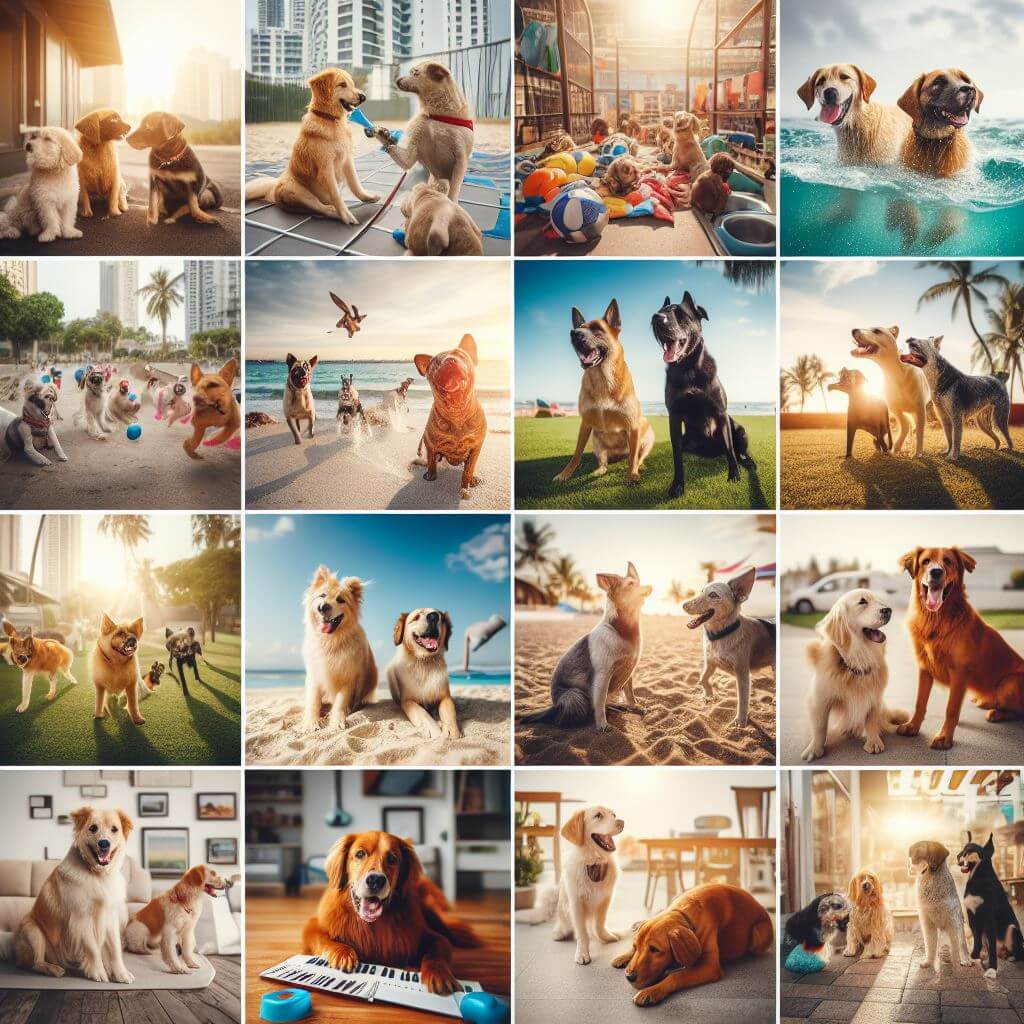
Here are some reasons why dog-to-dog interactions are important:
- Social Skills: Play teaches puppies crucial social cues. Through interactions with other dogs, they discern when they’re being too aggressive or too submissive.
- Mental Stimulation: Every game is a mental challenge. Whether it’s figuring out how to fetch a ball that’s rolled under a couch or understanding the rules of a new game, playtime enhances their problem-solving abilities and cognitive functions.
- Physical Exercise: Playing with other dogs often involves unpredictable moves, offering a more rigorous workout than structured games. This unpredictability is excellent for their agility, strength, and overall fitness.
- Stress Relief: Dogs, like humans, can experience stress and anxiety. Social interactions, especially play, serve as a therapeutic outlet, allowing them to release pent-up tension.
How to introduce your dog to other dogs safely
Introducing your dog to other dogs should be done carefully to ensure a positive experience for all involved. Here are some steps to follow:
- Neutral Location: Find a neutral, safely fenced, outdoor area in which to begin the relationship.
- One Handler Per Dog: You’ll want one handler per dog.
- Leashes On: Initially, keep the dogs’ leashes attached but don’t hold them or restrain the dogs.
- Positive Reinforcement: Reward your dog for calm behavior with treats and praise.
- Gradual Introduction: Start with walking outdoors on neutral territory where you have plenty of space, like a park, open field, or quiet street.
- Monitor Body Language: Pay attention to the dogs’ body language. If one or both dogs show any signs of stress or agitation, proceed more slowly with the introduction.
Remember, first impressions matter. How the dogs interact in their first few encounters can set the tone for their entire relationship. If you’re not reasonably confident that introductions will go smoothly, consider engaging the services of a qualified behavior professional.
Socializing Your Dog with Humans
Socializing your dog with humans is crucial for their development and well-being.
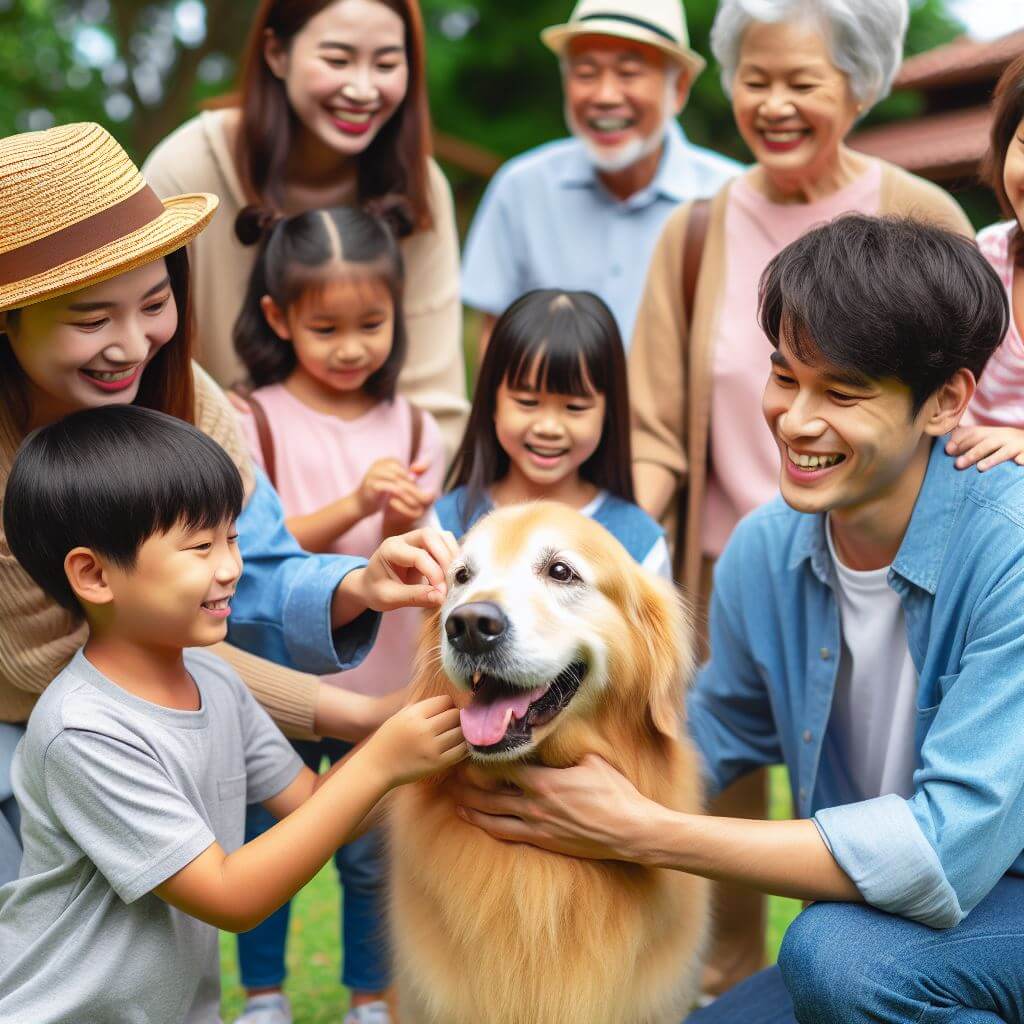
Here are some methods and techniques for socializing your dog with humans:
Different Approaches:
- Daily Walks: Just taking your dog out to a public place and walking around will help them grow more comfortable with the world and people around them.
- Mix It Up: Expose your dog to a wide variety of people, from men and women to children, so they can get acclimated to the idea of people.
- Dog Classes: Ask your vet about local dog socializing opportunities that might be a good fit for you and your pet.
- Introduce Your Dog to Guests: A good way to socialize your dog with humans is by asking guests to bring some treats when they come over, or offering them a box of kibble to give your dog.
Choosing the Right Method:
- Consider Your Dog’s Personality: Some dogs are more outgoing and adventurous, while others may be shy or anxious. Choose a method that suits your dog’s personality.
- Start Small: If your dog is not used to socializing, start with less intimidating situations like one-on-one play dates before moving on to more challenging environments like dog parks.
- Use Positive Reinforcement: Always associate new experiences with positive things like treats and praise. This will help your dog form positive associations with socializing.
- Consult a Professional: If you’re unsure about how to socialize your dog or if your dog has serious socialization issues, consider consulting a professional dog trainer or behaviorist.
Remember, every dog is unique, so what works for one dog might not work for another. The most important thing is to be patient and consistent, and to make socialization a positive experience for your dog.
Socializing Your Dog with Different Environments
Socializing your dog with different environments is an essential part of their development and is an invaluable task for all dog owners. It refers to the process of exposing a dog to different people, animals, environments, and situations in a positive and controlled way. When done correctly, this practice can help dogs develop into well-adjusted, confident, and friendly animals.
Here are some methods and techniques for socializing your dog with different environments:
Different Approaches:
- Daily Walks: Just taking your dog out to a public place and walking around will help them grow more comfortable with the world and people around them. From cars driving down the street to the mailman, the world becomes a little bit less scary once you’ve been around the block a time or two.
- Mix It Up: Expose your dog to a wide variety of environments, so they can get acclimated to the idea of different places.
- Dog Classes: Ask your vet about local dog socializing opportunities that might be a good fit for you and your pet.
Choosing the Right Method:
- Consider Your Dog’s Personality: Some dogs are more outgoing and adventurous, while others may be shy or anxious. Choose a method that suits your dog’s personality.
- Start Small: If your dog is not used to socializing, start with less intimidating environments before moving on to more challenging environments.
- Use Positive Reinforcement: Always associate new experiences with positive things like treats and praise. This will help your dog form positive associations with socializing.
- Consult a Professional: If you’re unsure about how to socialize your dog or if your dog has serious socialization issues, consider consulting a professional dog trainer or behaviorist.
Remember, every dog is unique, so what works for one dog might not work for another. The most important thing is to be patient and consistent, and to make socialization a positive experience for your dog.
Challenges in Dog Socialization
Socializing a dog is a crucial part of their development, but it can come with its own set of challenges.
Here are some common challenges faced during dog socialization:
- Fearful or Anxious Behavior: Dogs who missed early socialization often exhibit fearful, anxious, over-excited, or aggressive behavior. They might be reactive towards other dogs, or fearful around unfamiliar people.
- Handling Issues: Some dogs who missed early socialization don’t do well with handling, such as at the groomer or veterinarian’s office.
- Unfamiliar Environments: Your dog may be anxious anywhere outside of their comfort zone at home.
- Noise Anxiety: Dogs who missed early socialization might have noise anxiety during fireworks or other loud noises.
- Genetics: Genetics plays a large role in a dog’s temperament and behavior, and it’s also natural for dogs to become less social as they mature.
- Interpreting Signals: It may be difficult for dogs (and people) to read and interpret the signals of other dogs, especially those of different breeds.
- Fear and Aggression: Fear and aggression are common issues. If your dog exhibits fear, don’t force the situation.
Remember, if your dog missed out on socialization when they were young, you can still do quite a lot to help them feel more comfortable and confident. It’s an incredibly rewarding journey that can significantly improve your dog’s quality of life.
How do I know if my dog is ready for group playtime?
Knowing when your dog is ready for group playtime can depend on several factors:
- Vaccination Status: Is your dog vaccinated? Veterinarians suggest puppies receive a series of vaccinations during their early weeks and months to boost their vulnerable immune systems and protect them from harmful infections.
- Protection Against Pests: Depending on where you live, you may need to protect your dog against flea and tick bites before scheduling an outdoor puppy playdate.
- Insurance: It’s not the most pleasant thing in the world, but when curious, rambunctious puppies get together, it can often lead to trouble.
- Health of Prospective Playmates: Talk to your pet-owning friend to make sure their own dog is healthy and protected from infection.
- Behavior, Size, Age, and Health Requirements: Your dog acceptance policy should clearly outline the behavior, size, age, and health requirements for dogs that are candidates for group play.
- Social Skills and Tolerance of the Dog Play Environment: Any dog combined with non–family dogs for group play should be formally evaluated.
- Play Signals: Dogs use signals to show other pups they’re ready to play. For example, you might see your dog put his front legs on the ground and his back end in the air as he faces his pal.
If you’re uncertain about setting up a group playtime, talk to your veterinarian. They’ll help you determine where, when, and how to best provide for your dog’s socialization.
What are some common mistakes to avoid when socializing a dog?
Socializing a dog is a crucial part of their development, but it can come with its own set of challenges.
Here are some common mistakes to avoid during dog socialization:
- Overwhelming Your Dog: Introducing your dog to too many stimuli at once can be overwhelming and counterproductive. Instead, gradually expose them to new experiences, people, and other animals in a controlled and positive manner.
- Neglecting Puppy Socialization: The critical period for socializing puppies is between 3-14 weeks of age. Neglecting socialization during this time can lead to long-term behavioral issues.
- Ignoring Body Language: Your dog’s body language can tell you a lot about how they’re feeling in a given situation. Pay close attention to signs of stress, fear, or discomfort, and adjust your approach accordingly.
- Skipping Obedience Training: Obedience training provides structure and helps establish a strong bond between you and your dog. A well-trained dog is more likely to be confident and comfortable in social situations.
- Not Providing a Safe Environment: Always ensure your dog’s safety during socialization sessions. Avoid exposing them to aggressive or fearful animals, as negative experiences can create lasting fears or behavioral issues.
- Forcing Interactions: Allow your dog to approach new experiences, people, and animals at their own pace. Forcing interactions can create fear and anxiety, leading to negative associations with the situation.
- Inconsistent Socialization: Socialization should be a consistent part of your dog’s life. Inconsistent socialization can lead to confusion and anxiety.
Remember, every dog is unique, so what works for one dog might not work for another. The most important thing is to be patient and consistent, and to make socialization a positive experience for your dog.
Can you recommend any books or resources on dog socialization?
Sure, here are some books and resources on dog socialization:




- “The Well Socialized Dog: Step-by-Step Socialization Training for Puppies and Dogs” by Faye Dunningham. This book provides a step-by-step guide on how to properly socialize an adult dog or a puppy. It covers training for canines that have already developed inappropriate responses and training to prevent behavioral issues from developing.
- “Puppy Socialization: What It Is and How to Do It” by Marge Rogers and Eileen Anderson. This book defines and demystifies the most important thing you can do for your puppy: socialization. It provides strategies for keeping humans and puppies safe while socializing puppies, even during the COVID-19 pandemic.
- The American Kennel Club also provides a list of books for dog lovers, as well as a free eBook on puppy socialization.
- “Doggie Language: A Dog Lover’s Guide to Understanding Your Best Friend” is another book that might be helpful.
Remember, every dog is unique and what works for one might not work for another. It’s always a good idea to consult with a professional dog trainer or a veterinarian for personalized advice. Happy reading! 🐶📚
Benefits of Proper Dog Socialization
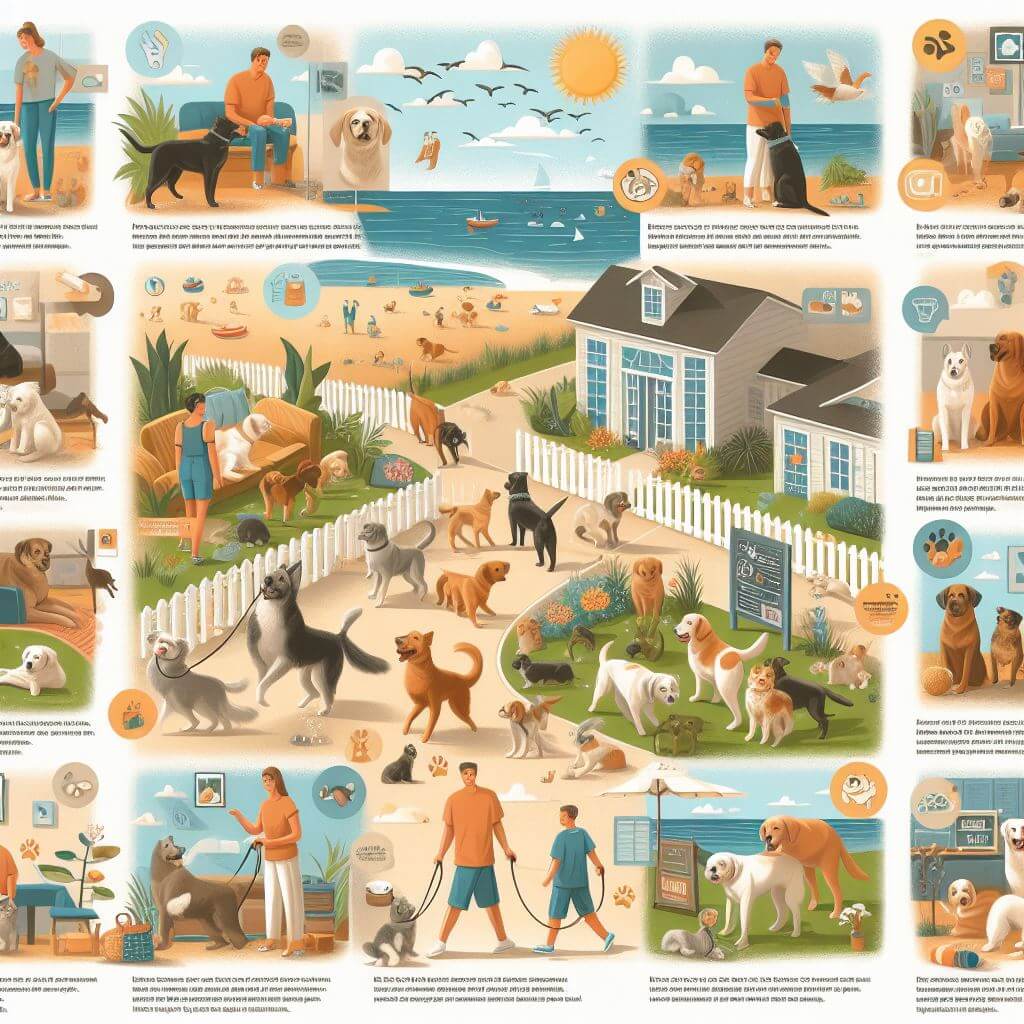
Proper dog socialization has numerous benefits, including:
- Increased Confidence: Well-socialized dogs have less fear and anxiety and are more adaptable to new environments.
- Improved Behavior: Socializing your dog improves its behavior. They show less aggression towards people or other dogs, which means less chances of dangerous behaviors like excessive barking.
- Increased Adaptability: A well-socialized dog is more adaptable to changes in their environment and can handle learning experiences better.
- Better Health: Well-socialized dogs are less likely to develop behavioral issues, which can lead to stress and other health problems.
- Increased Quality of Life: A well-socialized dog can enjoy a wider variety of experiences and activities, which can lead to a more fulfilling life.
- Ease of Transition into New Situations: Dogs who haven’t socialized with others are often fearful of new situations and circumstances – like meeting new people or going places. Socializing your dog through activities like visiting the dog park, or doggie daycare, helps to ease anxiety.
- Promote Healthy Dog Lives: Dogs who spend time interacting, exercising, and playing with other dogs and people lead healthy and happy lives.
- Help to Develop Confidence: By socializing your dog, they will develop new, good behaviors and will learn to be a well-rounded pup.
- Find their BFFF (Best Furry Friend Forever): Socializing your dog will lead to a happier pup overall.
Remember, socialization plays a pivotal role in shaping a dog’s behavior, temperament, and overall well-being. Early and ongoing socialization provides opportunities for positive interactions, fostering a confident, friendly, and well-rounded furry friend.
YouTube videos on Dog Socialization
Here are a couple of YouTube videos on Dog Socialization:
- “How to Socialize Your Dog – The RIGHT Way” by Dog Psychology 101. This video explains the most effective way to naturally socialize your dog. You will begin to understand how dogs interact with others naturally and how we can practice these healthy behaviors with them.
- “The Ultimate Guide to Socializing Your Dog Properly” by SolidK9Training. This video breaks down the variables that go into socialization and shows how to introduce your dog to other dogs, people, and various environments in a positive and stress-free way.
I hope you find these videos helpful! 😊
Conclusion: The Lifelong Journey of Dog Socialization
Dog socialization is a lifelong journey that begins the moment a puppy is born and continues throughout its life. It involves introducing your dog to a variety of experiences, environments, and beings in a positive and controlled manner.
Proper socialization can help your dog become a well-adjusted, confident, and friendly adult. It can also prevent behavioral issues and make your dog more adaptable to new environments.
However, socializing a dog can come with its own set of challenges. It’s important to be patient, consistent, and to make socialization a positive experience for your dog.
Remember, every dog is unique, so what works for one dog might not work for another. The most important thing is to understand your dog’s needs and work at a pace that’s comfortable for them.
In conclusion, dog socialization is a rewarding journey that can significantly improve your dog’s quality of life. It’s never too late to start, and the benefits are well worth the effort.
FAQ:
How can doggie daycare and boarding facilities help in socialization?
Doggie daycare and boarding facilities can be a great source of socialization for dogs of all ages. These businesses provide a safe, supervised environment where dogs can socialize with other canines and learn to interact appropriately with people.
Can senior dogs be socialized?
Senior dogs can also benefit from socialization, although they may not be able to handle long walks or vigorous play like they could when they were younger.
How to socialize an adult dog?
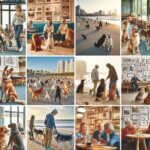
There are several ways to socialize an adult dog, including having play dates with other dogs they are familiar with, identifying and using reinforcement techniques, and walking your dog on a non-retractable leash.
What is the most effective socialization window for a dog?
The most effective socialization window for a dog is when they are between three and 20 weeks of age.
What Kinds of People Should You Expose Your Dog To?
Dogs should be exposed to a wide variety of people, including men, women, children, and people of all ages and ethnicities. It would be best if you also exposed them to different experiences, such as car rides, grooming, and vet visits.
Can Adult Dogs Be Socialized?
While dog socialization is often discussed as being primarily for puppies, adult dogs can benefit from it as well. If an adult dog was not properly socialized as a puppy, it is never too late to start.
Why Is Socialization So Important in Dogs?
Properly socializing your dog from an early age is the best way to help them feel safe and confident throughout their lives. Even if new environments or the sound of a vacuum cleaner might not pose any actual threat, your dog does not know that yet.

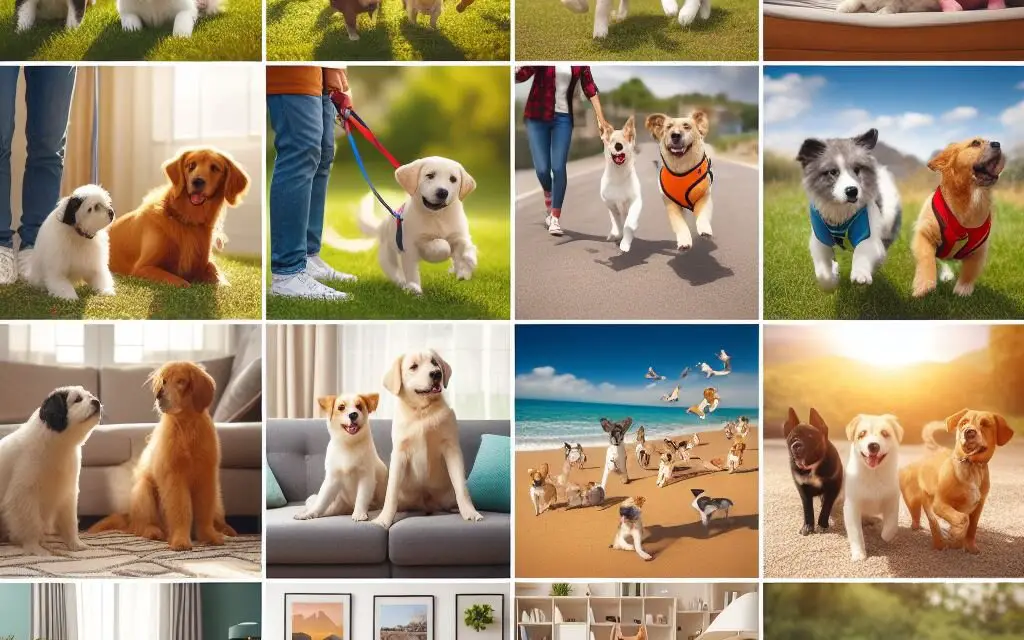
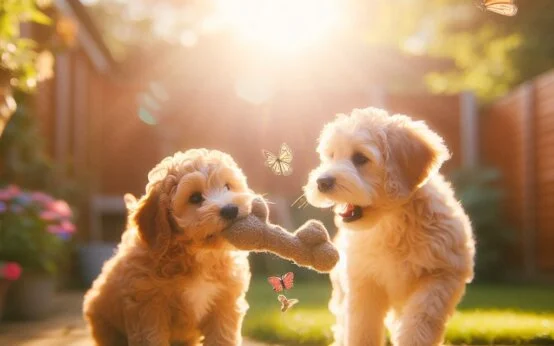 Mini Labradoodle: A Complete Guide
Mini Labradoodle: A Complete Guide 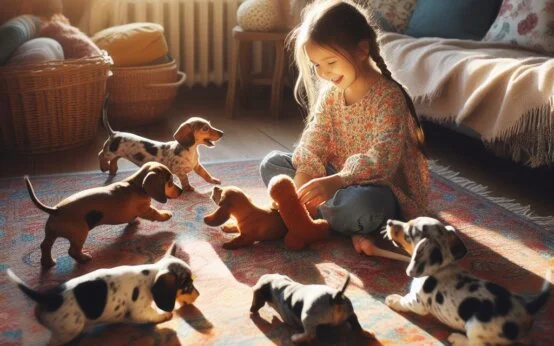 Dapple Dachshund: A Unique and Lively Breed
Dapple Dachshund: A Unique and Lively Breed 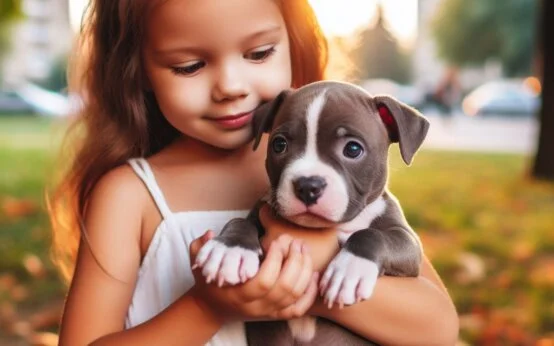 Pocket Pitbull: A Compact Canine Companion
Pocket Pitbull: A Compact Canine Companion  Preparing for an Adventure: A Golden Retriever Packs Its Suitcase
Preparing for an Adventure: A Golden Retriever Packs Its Suitcase 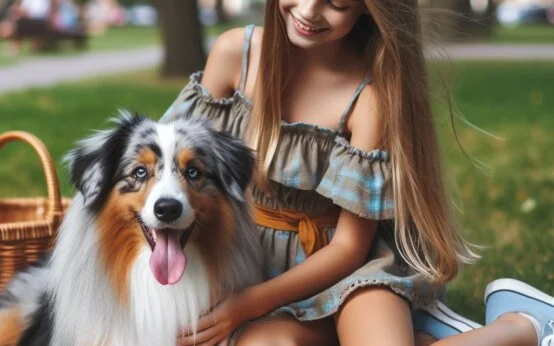 The Blue Merle Australian Shepherd: A Captivating and Unique Breed
The Blue Merle Australian Shepherd: A Captivating and Unique Breed 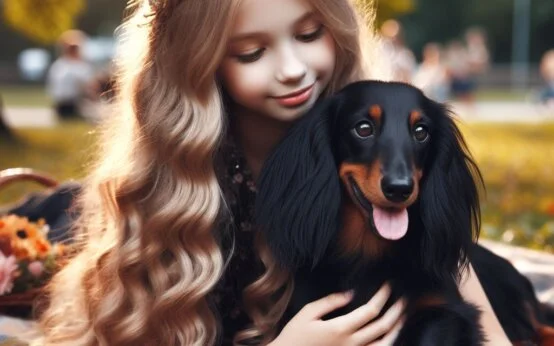 Long Haired Dachshund: A Guide to This Charming Breed
Long Haired Dachshund: A Guide to This Charming Breed  Mini Labradoodle: A Complete Guide
Mini Labradoodle: A Complete Guide 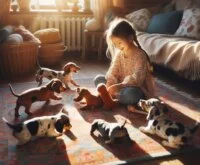 Dapple Dachshund: A Unique and Lively Breed
Dapple Dachshund: A Unique and Lively Breed  Pocket Pitbull: A Compact Canine Companion
Pocket Pitbull: A Compact Canine Companion  Preparing for an Adventure: A Golden Retriever Packs Its Suitcase
Preparing for an Adventure: A Golden Retriever Packs Its Suitcase  The Blue Merle Australian Shepherd: A Captivating and Unique Breed
The Blue Merle Australian Shepherd: A Captivating and Unique Breed  Long Haired Dachshund: A Guide to This Charming Breed
Long Haired Dachshund: A Guide to This Charming Breed
18 Comments